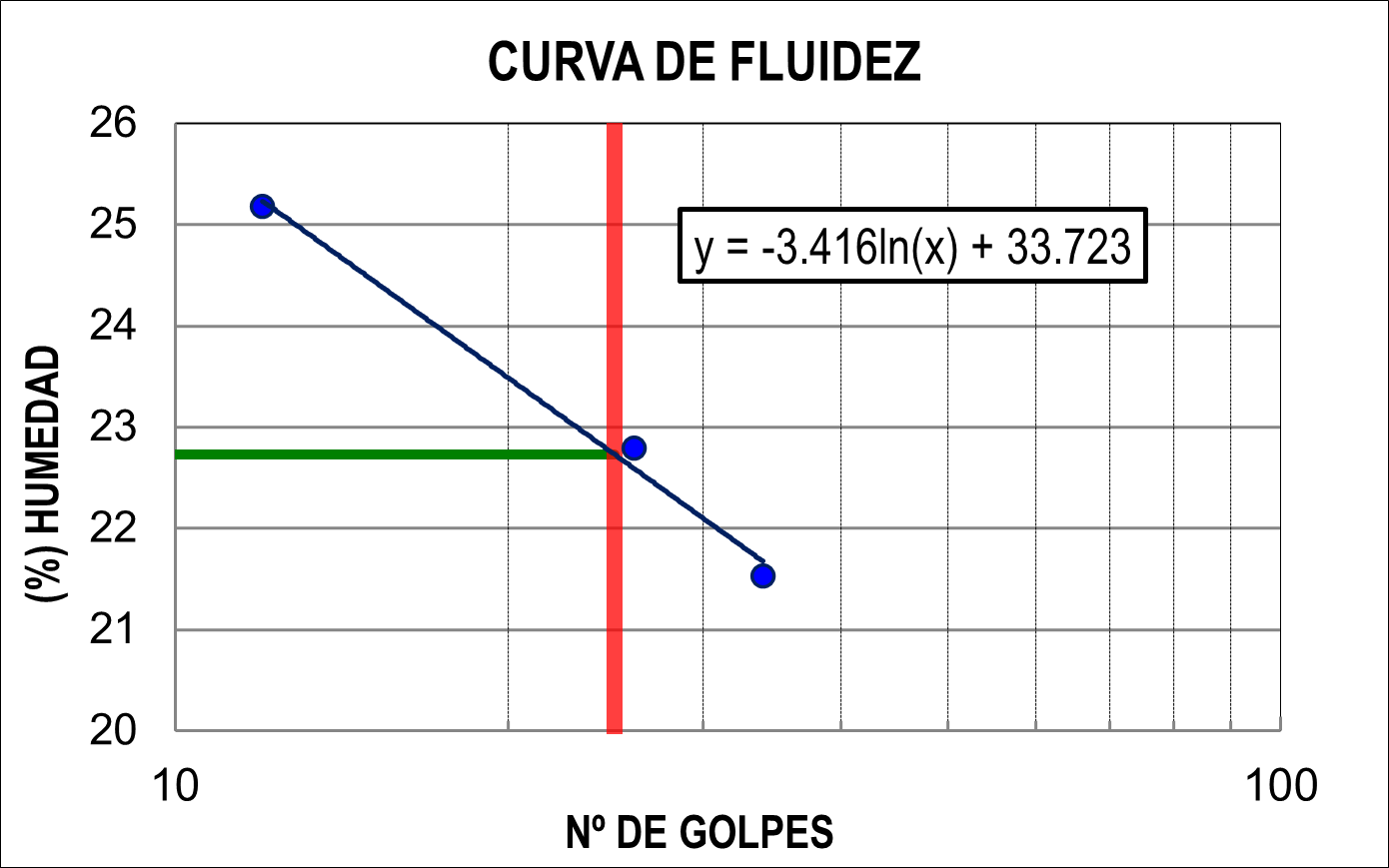
Publicado
Elementos de tierra reforzada con adición de Opuntia ficus-indica y Physalis peruviana
Reinforced earth elements with the addition of Opuntia ficus-indica and Physalis peruviana
DOI:
https://doi.org/10.15446/dyna.v92n235.116091Palabras clave:
adobe, cascara, resistencia, Opuntia ficus-indica, Physalis peruviana (es)adobe, shell, resistance, Opuntia ficus-indica, Physalis peruviana (en)
Descargas
Esta investigación incorporó cascarilla de aguaymanto (Physalis peruviana) en proporciones de 0.2%, 0.4% y 0.6%, y mucílago de tuna al 6%, 8% y 10% (Opuntia ficus-indica) como estabilizadores. La tierra usada se obtuvo del distrito de San José, Lambayeque, Perú, siguiendo la norma E.080. Los mejores resultados se lograron con 0.2% de cascarilla y 10% de mucílago. La compresión en adobes fue de 16.82 kg/cm2, mejorando un 8.4% respecto al patrón. La resistencia en pilas de adobes aumentó un 35.8%. El ensayo de tracción mostró una mejora del 22.4% con una resistencia de 1.04 kg/cm2. En el ensayo de absorción, se obtuvo un 13.16%, mejorando un 14.6%, y el ensayo de succión registró 12.09%, una mejora del 30.3% comparado con el patrón.
This research incorporated the husk of aguaymanto (Physalis peruviana) in proportions of 0.2%, 0.4%, and 0.6%, and the mucilage of prickly pear (Opuntia ficus-indica) at 6%, 8%, and 10% as stabilizers. The soil used was obtained from the San José district in Lambayeque, Peru, following the selection process established by standard E.080. The most notable results were observed when incorporating 0.2% husk and 10% prickly pear. Compressive strength in the adobe bricks was 16.82 kg/cm2, representing an 8.4% improvement compared to the control sample. Additionally, in the adobe stacks, resistance increased by 35.8%. The tensile test also showed a 22.4% improvement, with a strength of 1.04 kg/cm2. Regarding absorption testing, a value of 13.16% was obtained, improving by 14.6%, and the suction test recorded 12.09%, representing a 30.3% improvement over the standard.
Referencias
[1] Sánchez, C.A., Alonso, G.E., Navarro, E.A., Ruiz, M.M., Martínez, M.W., and Álvarez, G.J., Physical-chemical, mechanical and durability characterization of historical adobe buildings from the State of Michoacan. Journal of Building Engineering, [en línea]. 86(1), art. 108802, 2024. Disponible en: https://www.sciencedirect.com/science/article/pii/S235271022400370X DOI: https://doi.org/10.1016/j.jobe.2024.108802
[2] Ventura, A., Ouellet-Plamondon, C., Röck, M., Hecht, T., Roy, V., Higuera, P., Lecompte, T., Faria, P., Hamard, E., Morel, J.C., and Habert, G., The impact of sustainable practices on urban architecture. Journal of Urban Sustainability, 18(2), pp. 123-134, 2024. DOI: https://doi.org/10.1007/978-3-030-83297-1_8
[3] Albuja, J., and Damián, A., Leveraging Life Cycle Cost Analysis (LCCA) for optimized decision making in adobe construction materials. Applied Sciences, 14(5), pp. 1760, 2024. DOI: https://doi.org/10.3390/app14051760
[4] Juárez J.P., De vivienda vernácula a vivienda popular rural en el municipio de Calpan, Puebla, México. INVI, [en línea 37(106), pp. 262-283,]. 2022. Disponible en: https://revistainvi.uchile.cl/index.php/INVI/article/view/66515
[5] Khtou, O., Aalil, I., Aboussaleh, M., and Zohra, F., Mechanical Analysis of Fiber Reinforced Adobe. Civil Engineering and Architecture, 9(7), pp. 2160-2168, 2021. DOI: https://doi.org/10.13189/cea.2021.090705
[6] Marín-Alfaro, J.G.P., and Aguilar-Aliaga, O., Analysis of the maximum tension in adobes incorporating plant materials such as Toquilla Straw Fiber and Ichu. in: 20th LACCEI International Multi-Conference for Engineering, Education and Technology, 2022, pp. 1-8. DOI: http://dx.doi.org/10.18687/LACCEI2022.1.1.301
[7] Chavez, J.Y., and Alva, A.E., Physical and mechanical properties of compacted adobe with incorporation of coconut fibers. in: 18th LACCEI International Multi-Conference for Engineering, Education, and Technology, pp. 1-9, 2020. DOI: https://doi.org/10.18687/LACCEI2020.1.1.447
[8] Benites, V., Sánchez, J., and Ruiz, G., Effect of admixture Cabuya polymer on the water resistance of earth blocks for building construction. in: 16th LACCEI International Multi-Conference for Engineering, Education, and Technology, 2018, pp.1-6. DOI: https://doi.org/10.18687/LACCEI2018.1.1.59
[9] Valenzuela-Inga, A.J., Benito-Zuñiga, J.G., Moggiano-Aburto, N.J., Cipriano-Solis, R.A., Gamboa, E.O., Julcarima, A.M. y Perez, G., Sustainable blocks reinforced with Agave americana L. Fiber and its mechanical properties. Tesis de Licenciatura. Repositorio de la Universidad Continental, 2023. Disponible en: https://repositorio.continental.edu.pe/handle/20.500.12394/13288
[10] Laborel-Préneron, A, Giroudon M, Aubert, J.E., Magniont, C., and Faria, P., Experimental assessment of bio-based earth bricks durability. IOP Conference Series: Materials Science and Engineering, pp. 1-9, 2019. DOI: https://doi.org/10.1088/1757-899X/660/1/012069
[11] Ratchakrom, C. and Rodvinij, P., Mechanical behavior of adobe bricks reinforced with water hyacinth fiber. International Journal of GEOMATE, 21(85), pp. 10-16, 2021. DOI: https://doi.org/10.21660/2021.85.6227
[12] Araya-Letelier, G., Antico, F., Burbano- Garcia., Concha-Riedel, J., Norambuena-Contreras, J., and Saavedra-Flores, E., Experimental evaluation of adobe mixtures reinforced with jute fibers. Construction and Building Materials, 276, art. 122127, 2021. DOI: https://doi.org/10.1016/j.conbuildmat.2020.122127
[13] Amany, M. and Rushdy, R., Evaluating the effect of adding sugarcane bagasse to the fire clay brick's properties. Civil Engineering and Architecture, 10(1), pp. 71-78, 2022. DOI: https://doi.org/10.13189/cea.2022.100106
[14] Nasla, S., Gueraoui, K., Cherraj, M., Jamil, Y., and Bougtaib, K., Technical studies of adobe bricks stabilize with lime from the quarry of the commune of Had Laghoualem in Morocco. International Journal on Engineering Applications, 9(1), pp. 61-80, 2022. DOI: https://doi.org/10.17654/0973576322013
[15] Hadi, A., Nawab, A., Alam, F., and Zehra K., Alginate/aloe vera films reinforced with tragacanth gum. Food Chemistry: Molecular Sciences, 4, pp. 1-8, 2022. DOI: https://doi.org/10.1016/j.fochms.2022.100105
[16] Soares, M.A., Faustino-Junior, W., Castro, B.M.C., Fernandez, J.A.M., Leite, G.L.D., and Zanuncio, J.C., Edessa meditabunda (Hemiptera: Pentatomidae) feeding on Physalis peruviana (Solanaceae) in the highlands of Brazil. Brazilian Journal of Biology, 83(1), art. 248566, 2021. DOI: https://doi.org/10.1590/1519-6984.248566
[17] García-Godos, P., Prado-Sumari, I., Estrada, R. y Millán, B., Caracterización morfológica in situ de 34 accesiones de Physalis peruviana L. del departamento de Ayacucho. Información Tecnológica, 33(2), art. 200169, 2022. DOI: https://doi.org/10.4067/S0718-07642022000200169
[18] NTP E.080, Diseño y construcción con tierra reforzada, Ministerio de Vivienda, Construcción y Sanamiento. Normas del Reglamento Nacional de Edificaciones (RNE), [en línea]. 2020. Disponible en: https://www.gob.pe/institucion/sencico/informes-publicaciones/887225-normas-del-reglamento-nacional-de-edificaciones-rne
[19] NTP 399.605, Método de ensayo para la determinación de la resistencia a la compresión de prismas de albañilería. Comprensión en Prismas de Albañilería. [en línea]. 2013. Disponible en: https://es.scribd.com/document/545404360/NTP-399-605-2013-COMPRENSION-EN-PRISMAS-DE-ALBANILERIA-1
[20] NTP 399.613, Métodos de muestreo y ensayo de ladrillos de arcilla usados en albañilería. Comisión de Reglamentos Técnicos y Comerciales-INDECOPI. [en línea]. 2017 Disponible en: https://es.scribd.com/document/526047833/NTP-399-613-2017
[21] NTP 339.127, Método de ensayo para determinar el contenido de humedad de un suelo. Manual de Ensayos de Materiales para Carreteras, MTC. [en línea]. 2019 Disponible en: https://es.scribd.com/doc/213648347/NTP-339-127-Contenido-de-Humedad
[22] NTP 339.134, Métodos para La Clasificación de Suelos con propósito de ingeniería. Comisión de Reglamentos Técnicos y Comerciales-INDECOPI. [en línea]. 1999. Disponible en: https://es.scribd.com/document/357453953/NTP-339-134-1999-Suelos-Metodos-Para-La-Clasificacion-de-Suelos-Con-Proposito-de-Ingenieria
[23] NTP 339.135, Métodos de clasificación de suelos para uso en vías de transporte. Comisión de Reglamentos Técnicos y Comerciales-INDECOPI. [en línea]. 1999. Disponible en: https://es.scribd.com/document/409187797/Ntp-339-135-Clasificacion-Aashto
Cómo citar
IEEE
ACM
ACS
APA
ABNT
Chicago
Harvard
MLA
Turabian
Vancouver
Descargar cita
Licencia
Derechos de autor 2025 DYNA

Esta obra está bajo una licencia internacional Creative Commons Atribución-NoComercial-SinDerivadas 4.0.
El autor o autores de un artículo aceptado para publicación en cualquiera de las revistas editadas por la facultad de Minas cederán la totalidad de los derechos patrimoniales a la Universidad Nacional de Colombia de manera gratuita, dentro de los cuáles se incluyen: el derecho a editar, publicar, reproducir y distribuir tanto en medios impresos como digitales, además de incluir en artículo en índices internacionales y/o bases de datos, de igual manera, se faculta a la editorial para utilizar las imágenes, tablas y/o cualquier material gráfico presentado en el artículo para el diseño de carátulas o posters de la misma revista.
















